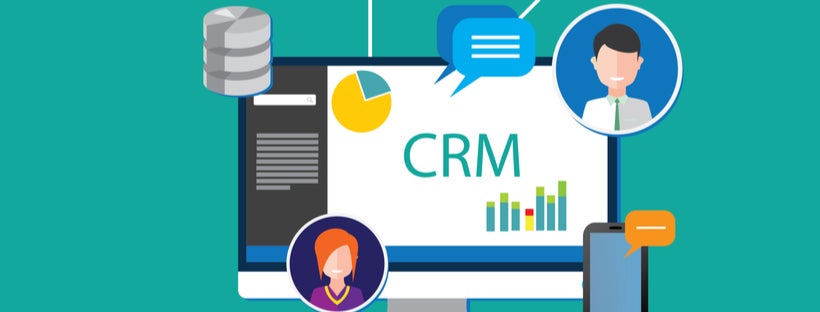In the digital age, sustaining and growing your business can seem like an impossible task. In fact, one in three businesses report that generating new business leads is their primary concern.
While customers might love the convenience of online shopping, they prefer the intimacy of in-store interactions. Targeted touchpoints will build lasting customer relationships, grow your business, and boost your sales. Read on to learn how your business can create high-conversion customer experiences.
Know Your Target Market

If you don’t know who your customer is, you won’t know how to connect with them. Understanding your target market is essential for building a thriving business. A well-defined target market helps you frame effective marketing campaigns that connect your brand with customers and convert these connections to sales.
Focusing your marketing budget on the customers most likely to support your business ensures you are seeing the maximum return on investment. If you want to better define your target market, consider the following:
- What is the age of your typical customer?
- Look at the competition. Who are their advertisements targeting?
- Where are your primary customers located?
- What do your primary customers do for work?
- Do your products or services appeal to shoppers with a certain income level?
- Do your customers have similar values?
Once you’ve determined your target market, analyze the marketing messages and mediums that resonate most with this group. Knowing how and when to connect with your customers will lead to higher-conversion advertisements and help your business expand.
Build an Advertising Arsenal

Tactile touchpoints are effective tools for building customer touchpoints. Customers are inundated with online ads and are looking for real-life authenticity. Physical advertising materials like banners, flags, and flyers will stand out from the sea of emails and internet blurbs.
In fact, physical advertising materials can be used to expand your online presence. Cheeky snack company, Emily Crisps, didn’t mean to launch their first outdoor campaign during a pandemic, but that is exactly what happened at the beginning of last year. The company decided to turn the pandemic’s lemons into lemonade and reimagined their messaging. Messages like Our First Ever Poster, Seen By A Runner And One Pigeon. Typical resonated with customers who quickly posted the ads all over social media.
Out of home advertising materials like vinyl banners, car decals, and flags can be used to build brand visibility on the go. Emily Crisps is a prime example of a company understanding their target market well enough to pivot their OOH messaging in such an effective way that it led to a viral campaign. You can apply these same ideas to reaching your target market in store, on the go, or online.
Event Marketing Strategy

Whether you operate in the B2B sector or a B2C environment, events are an integral part of your business marketing strategy. Events are the perfect opportunities to engage with existing customers and generate new leads.
Here are some event marketing strategies to spark your creativity:
- Promote upcoming events online and instore.
- Giveaway branded merchandise to customers.
- Partner with other businesses to host a community event.
- Advertise in-store product sampling or demonstrations.
- Create a hashtag and use signage prompts to encourage guest participation.
- Build excitement for a new product launch with VIP registration.
CRMs: An All-in-One Solution

As businesses embrace a data-driven model, customer information plays a key role in maintaining existing customer relationships while expanding your consumer base. Customer Relationship Management (CRM) software helps you manage your customer base and new business leads in a convenient manner.
Modern-day CRM applications come with features that automate personalization, which makes everything from lead management to the post-sales experience streamlined for both the customer and your company. When used effectively, these programs can lay the foundation for a truly omnichannel experience, creating consistency for consumer touchpoints.
Naturally, customer experiences that deliver beyond “satisfactory” results will earn a business more customers, greater loyalty, and improve profitability. Using CRM software can help you keep up with your customers and send them personalized offers, generate an effective referral plan, capitalize on new business leads, and boost sales.
Organic Engagement

Organic engagement is important for online and offline marketing initiatives. In regards to the digital space, organic engagement includes liking, commenting, and following your customers posts or interacting with their comments on your social media accounts.
When it comes to offline organic engagement, there are several ways to connect with customers:
- Hire brand ambassadors to conduct product sampling.
- Sponsor community events and share your brand information.
- Focus on creating great in-store customer service initiatives.
- Send thank you or birthday cards to existing customers.
- Offer branded gifts with purchases.
Amp Up Your Referral Program

Last, but not least, referral programs encourage word-of-mouth advertising, which is one of the most effective ways to market your brand. Almost 83% of consumers admit that word-of-mouth recommendations influence their buying decisions.
If you want to roll out a referral program, make sure your products and customer service are top-notch. You can incentivize existing customers to share their experiences with your company online and with their network. Discounts, giveaways, and personalized promotions will drive word-of-mouth advertising and promote a positive identity for your brand.


 Posted in
Posted in